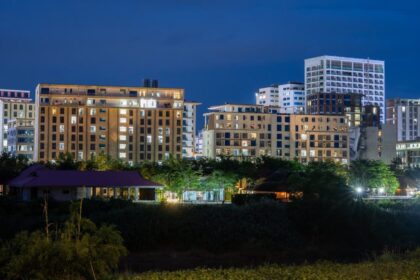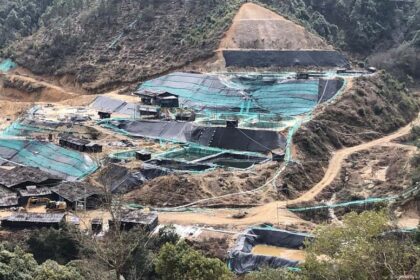From coffee rivalry to a milk tea moment
For years, the headline contest in beverage retail has been Starbucks versus Luckin. While the coffee giants duke it out, a different habit has taken hold across Southeast Asia. Milk tea, often called bubble tea, has moved from occasional treat to daily ritual for millions of students, office workers, and delivery riders. The category combines customization, sugar management, chewy textures like pearls, and an endless stream of seasonal flavors. It delivers an affordable indulgence that fits local climates and tastes.
- From coffee rivalry to a milk tea moment
- Why Southeast Asia became the launchpad
- The Chinese playbook that travels
- Localization that feels native, not foreign
- Store economics, franchising, and the race for sites
- Supply chains, speed, and quality control
- Country snapshots
- How rivals and adjacent categories are responding
- Risks to watch
- The Essentials
Chinese brands have found a sweet spot in this shift. They are building vast networks, perfecting high throughput operations, and pricing for volume. Mixue, which sells both tea and soft serve ice cream, illustrates the pace. In a Hong Kong listing prospectus filed in late 2024, the company disclosed 45,302 stores worldwide, with Indonesia and Vietnam its top two overseas bases by outlet count. That scale changes how consumers discover and buy drinks, and how landlords, franchisees, and delivery platforms shape their own strategies.
The momentum is not an isolated fad. Research firms that track the category put the global bubble tea market at USD 2.63 billion in 2024 and forecast roughly USD 4.78 billion by 2032, a compound annual growth rate near 8 percent. Asia Pacific accounts for the largest share. Within Southeast Asia, spending on what many call new style tea drinks has already climbed into the billions of dollars, helped by economic growth, tourism recovery, and an eager Gen Z audience that treats milk tea as both drink and social symbol.
Why Southeast Asia became the launchpad
Southeast Asia checks almost every box for rapid beverage expansion. The weather is hot and humid most of the year, so cold drinks sell well without a winter lull. Urbanization keeps foot traffic dense around campuses and transit. Consumers often prefer sweeter flavor profiles than in northern China, which aligns with milk tea’s traditional recipes. Industry estimates put annual consumption of modern tea beverages in the region at about USD 3.66 billion, with Indonesia leading by a wide margin and Thailand in second place.
The competitive landscape also favors newcomers. In many cities there is no entrenched local champion with thousands of outlets. That leaves room for chains that can open quickly, build brand awareness on social media, and lock in prime sites before rivals. For operators, the region offers year round demand with fewer seasonal dips. For consumers, the format solves several use cases at once: a caffeine kick when they want tea with a lift, a dessert swap with ice cream add ons, and a mobile friendly drink that suits delivery and online ordering.
Indonesia’s scale makes it a magnet. The mix of young consumers, high smartphone use, and a taste for sweet iced beverages has turned the country into the region’s top market for bubble milk tea demand. Thailand’s cafe culture, Vietnam’s fast growing middle class, and the Philippines’ enduring enthusiasm for sweet drinks round out a fertile landscape. Singapore, with high incomes and deep mall culture, acts as a showcase market and a springboard to the rest of the region.
The Chinese playbook that travels
Chinese tea chains bring operating systems honed in one of the most competitive food and beverage markets on earth. Years of price wars and rapid iteration back home trained these companies to integrate supply chains, standardize equipment, and churn out frequent product launches to keep lines moving and social feeds buzzing. In China, the market has matured into a data driven arena where efficiency, procurement, and digital loyalty programs matter as much as product taste. When these systems arrive in Southeast Asia, they often feel like a step change in speed and scale.
Value at scale
Mixue’s model is built on volume, low prices, and a dual product lineup of tea and soft serve. Franchisees gain access to centralized sourcing for ingredients and equipment, plus standardized training that shortens opening timelines. By late 2024 the company listed more than 45,000 stores globally in regulatory filings, and industry trackers estimate nearly 4,000 across Southeast Asia alone. That density transforms brand visibility and drives discovery. A student who tries Mixue near a campus may find the same brand at a transit hub, a neighborhood mall, and a delivery app promotion within the same week.
Scale also underpins bargaining power with landlords and suppliers. Central kitchens or regional warehouses can smooth ingredient costs and reduce stockouts. Uniform cup designs, lids, and sealing machines cut variance. In markets where takeout dominates, these details reduce spill risk and speed up order handoff to delivery riders, which lifts daily throughput.
Premium positioning
At the higher end, Heytea and Nayuki push a different playbook. They target marquee malls, invest in store aesthetics, and pitch fresher tea bases and fruit forward recipes at higher price points. The goal is to create a cafe experience that feels sit down, with photogenic packaging that drives peer to peer marketing on Instagram and TikTok. Brand collaborations and limited time flavors keep menu boards fresh. CHAGEE, another fast growing name, has concentrated in Malaysia, Singapore, and Thailand with roughly 100 international stores and more than 50 in Malaysia. Its use of in house automation shortens preparation time for customized iced milk tea, which helps balance quality and speed in peak periods.
The market supports both ends of the spectrum. Value chains win on ubiquity and price. Premium chains win on experience and buzz. Middle price brands often use refined store design and celebrity endorsements to cut through the noise. Together, they are training consumers to expect new flavors every few weeks, seasonal menu rotations, and a steady rhythm of influencer campaigns.
Localization that feels native, not foreign
Southeast Asia is diverse by language, religion, and taste. The brands that scale learn to localize. Sweetness levels are adjusted upward for markets that favor richer profiles, with options to step down when needed. Tropical fruits such as mango, calamansi, passion fruit, and lychee make frequent appearances. Toppings go beyond tapioca pearls to include grass jelly, aloe, cheese foam, and pudding, which helps shops cater to dessert seekers as well as tea drinkers.
Local certification and compliance matter. In Muslim majority markets such as Indonesia and Malaysia, halal certification increases credibility and opens doors at major landlords and delivery platforms. Packaging is adapted for local language requirements. Seasonal marketing ties into regional festivals, from Ramadan to Songkran and Lunar New Year. Mascots and brand jingles, led by Mixue’s Snow King, turn into cultural memes that build loyalty with little paid media.
Delivery plays a central role. Order volumes often spike on super app promotions, and chains design stores with separate pickup lanes for riders to prevent crowding. Loyalty programs inside brand apps reward repeat orders with points and free toppings. The best performing stores move quickly from trial to repeat by offering clear upsells, such as adding soft serve on top of a fruit tea or pairing a drink with a limited snack item.
Store economics, franchising, and the race for sites
Franchise models dominate the region’s buildout. Investment levels are comparable to China for many brands, but the opening process can be more complex because of local licensing, language, and sourcing differences. Even with that complexity, franchisees report attractive payback periods relative to a saturated mainland market. High occupancy rates in malls and frequent promotions from delivery platforms can make a strong first year when site selection is right.
Prime real estate is getting scarce as more chains enter. Campuses, transit nodes, and mid market malls remain the bullseye. In places like Singapore, Chinese brands use the city as a showcase. They accept higher rents and labor costs to build international credentials, then export that playbook to Indonesia, Vietnam, and Thailand. The city also provides access to a deep talent pool and a regulatory environment that rewards operational discipline.
Local pushback is rising in some areas as landlords face accusations of favoring deep pocketed entrants over smaller domestic cafes. Yet the larger story is a more competitive market that rewards speed, breadth of menu, and cost discipline. Consumers benefit from wider choices and frequent promotions, while rivals are forced to modernize operations and sharpen pricing.
Supply chains, speed, and quality control
Sourcing ingredients remains a challenge, especially for brands that insist on specific teas, syrups, and toppings. Cross border logistics can be slow or unreliable, which leads to periodic shortages. Many chains balance imports with local substitutes where quality allows, or they build regional distribution hubs that serve multiple countries. The most efficient operators diversify supplier bases, standardize equipment, and train staff to pivot when one topping runs short.
Speed is a competitive edge. Automated brewers, sealing machines, and pre measured syrups cut seconds without degrading taste. AI driven forecasting helps managers plan labor, order ingredients, and set dynamic promotions in off peak hours. Quality control teams conduct regular audits, often with mystery shoppers and centralized monitoring of store level metrics such as wait times and refund rates. The result is a more consistent experience as brands scale from dozens to hundreds of outlets across borders.
Country snapshots
Indonesia and Thailand lead
Indonesia is the region’s demand leader for milk tea. Mixue’s regulatory filings list 2,667 stores there as of September 2024, a figure few competitors can match in a single country outside China. Thai consumers, already comfortable with sweet drinks and cafe culture, have embraced both value and premium chains. Seasonal heat drives iced formats year round, while tourist traffic boosts sales in Bangkok and resort cities.
Malaysia and Singapore as showcase markets
Malaysia’s established tea culture and large middle class give brands a wide target. CHAGEE’s footprint of more than 50 stores in the country reflects both consumer demand and the ease of replicating successful mall formats. Singapore acts as a quality bar. Brands test pricing, service speed, and limited product runs in high visibility locations. The city’s diverse consumer base lets chains learn how international customers react before rolling out regionally. Its role as a launchpad has intensified as Chinese operators seek growth outside a slower home market.
Vietnam and the Philippines on the rise
Vietnam ranks among Mixue’s top overseas markets with 1,304 stores reported by late 2024. Ho Chi Minh City and Hanoi combine young demographics with dense retail clusters that reward network effects. In the Philippines, chains are adapting to a market with a strong sweet tooth and high delivery usage. Measured expansion, combined with partnerships for local sourcing, is helping brands avoid early stumbles in logistics.
How rivals and adjacent categories are responding
The surge has forced coffee and smoothie chains to adjust. Many have expanded cold tea menus, experimented with cheese foam, and launched fruit tea lines to keep dayparts busy. Local tea players have responded with sharper pricing and quicker product cycles. Taiwanese pioneers such as Gong Cha, Coco, and Tiger Sugar remain popular, and in some cities they work as benchmarks for recipe authenticity.
Technology investments are spreading. Promotions now travel across brand apps, super apps, and chat platforms. Operators use data to schedule staff, tailor coupons, and manage sugar caps for health conscious customers. In Malaysia and Singapore, sugar taxes on packaged drinks have nudged consumers toward sugar choice menus and lighter recipes, a trend that may expand across the region if more governments pursue public health goals.
Risks to watch
Rapid expansion carries risks. Ingredient shortages, rising rents, and high staff turnover can erode margins. Quality slippage hurts brands faster when social media is the main marketing channel. Regulators could tighten rules on sugar content or plastics, which would raise costs. The market is also diverse by language and culture, so products that succeed in Jakarta may require tweaks in Bangkok or Manila. The safest path mixes speed with patience: build supply resilience, invest in training, and localize menus city by city.
There is also the question of saturation. A student district that can support three outlets this year might reach its limit if six brands arrive at once. The best operators will use data to pace expansion, avoid cannibalization, and nurture franchisees through the early months when costs are front loaded. Those that treat Southeast Asia as a single uniform market will face setbacks, while those that think country by country will keep momentum.
The Essentials
- Milk tea has become a daily habit in Southeast Asia, powered by sweet flavor preferences, hot weather, and social media culture.
- Chinese chains bring scale and operating discipline learned in a hyper competitive home market, helping them open fast and price aggressively.
- Mixue reported 45,302 global stores as of September 2024 in Hong Kong regulatory filings, with Indonesia and Vietnam its largest overseas bases.
- Industry estimates put Southeast Asia’s modern tea beverage spend near USD 3.66 billion, led by Indonesia and Thailand.
- Global bubble tea sales are projected to rise from USD 2.63 billion in 2024 to about USD 4.78 billion by 2032 (CAGR near 8 percent).
- Value chains focus on ubiquity and price, while premium brands like Heytea and Nayuki compete on experience, ingredients, and store design.
- Localization includes higher sweetness levels, tropical fruits, halal certification in Muslim majority markets, and festival driven marketing.
- Supply chains remain a challenge, so brands blend imports with regional hubs and standardize equipment for speed and consistency.
- Franchise interest is strong, but store openings can be complex due to licensing and language differences across countries.
- Key risks include saturation, sugar regulations, staffing, and logistics bottlenecks, which require careful pacing and local adaptation.












